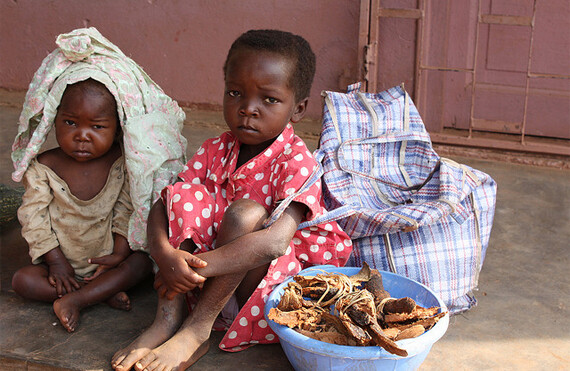Most people think of child nutrition as something to be addressed locally, not as a national issue, and certainly not as a global issue. With about 10 million children per year dying before the age of five, and more than a third of these deaths associated with malnutrition, there can be no doubt that child nutrition is indeed a problem of global importance.
Publications such as the annual State of the World's Children (UNICEF) and the Lancet series on Maternal and Child Undernutrition describe the problems in detail, and show how they can be addressed. The problem is that good ideas are not being implemented everywhere they should be. We are told that technical expertise and political will is needed to combat undernutrition, but the neediest countries lack these very capacities. We must go beyond asking what steps would work if they were undertaken to developing a global strategy to ensure that they are in fact undertaken.
On the whole, Lancet views malnutrition mainly as a series of national problems, acknowledging the global scope but not prescribing any pathways to work on that level. Similarly, UNICEF speaks mainly about what individual countries ought to do to improve survival rates for their children.
There have been some important global initiatives, but most of them are through private funding sources such as the Gates Foundation. Many focus on single diseases or specific approaches. The people of the entire world, represented by states of the entire world, have not taken on the issue of child malnutrition and mortality in a serious way.
The World Health Organization's Global Strategy for Infant and Young Child Feeding lists some possible tactics. But calling this document a global strategy can mislead people into thinking there is a serious strategy already in place. The document does not say what is to be done about countries that do not prepare a suitable national policy on infant and young child feeding.
Whether or not their view is global, we must also ask whether any of these documents offers a strategy. It is useful to define a serious strategy as a detailed plan of stepwise action under which designated actors using specific resources can be realistically expected to arrive at a concrete target within a specified time. We should expect to find clearly stated goals, a description of the management body, well-specified indicators of progress, explanations of how actions relate to outcomes, provisions for adjustments and midcourse corrections, and a global commitment of resources.
In trying to figure out what to look for in a strategy, consider an analogy: What would be a serious strategy for building a bridge across a river? Imagine what the plans for a major project such as the Golden Gate Bridge in San Francisco must have looked like. There would have been not only detailed drawings of the final product, but also carefully detailed step-by-step plans for construction and maintenance. Why do we not have comparable detailed global plans for saving millions of children from malnutrition? We have not even gone to the first level for child nutrition—spelling out what needs to be included in a global strategy.
There have been many cases of lofty rhetoric but meager plans at the global level. For example, the campaign for A World Fit for Children launched by the UN Special Session on Children in May 2002 offered a Plan of Action whose main function was to say that the major work was to be done through National Plans of Action. There was no real acceptance of responsibility or commitment of resources by the global community.
The End Child Hunger and Undernutrition Initiative (ECHUI), led by the World Food Programme and UNICEF looks like a global project, but almost all the action is to take place at the national level. The operational approach is "to strengthen national capacities for integrating and scaling up the delivery within national policy frameworks and programmes." There is no explanation of what is to be done about children in countries whose governments are either unwilling or unable to do what needs to be done. There is discussion of social safety nets within countries, but no discussion of a possible global safety net for children.
Solutions cannot be based on the assumption that all country governments have the capacity and the will to solve widespread malnutrition. Some governments and their programs can be strengthened, but it will take time. So long as we treat child malnutrition only as a series of national problems, the effort to end child malnutrition is doomed to failure. There must be a strong, systematic global effort that complements the national efforts.
![]() This article is licensed under a Creative Commons License.
This article is licensed under a Creative Commons License.
Please read our usage policy.




